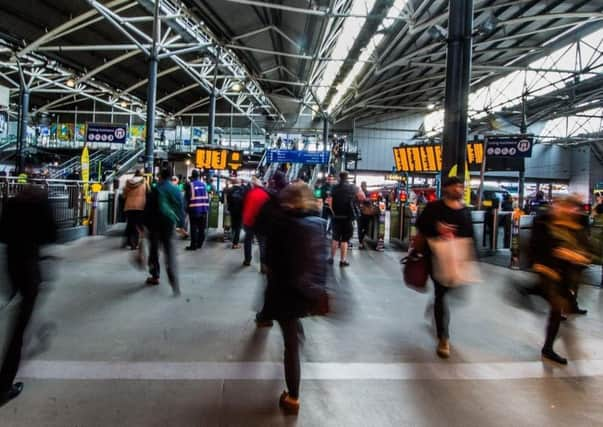Stephen Joseph: Putting North on right track for better transport


As the consultation on Transport for the North’s strategic plan finishes, it’s worth asking how far the plan will help bring about a better transport system.
Campaign for Better Transport has welcomed the creation of Transport for the North and helped its work, including organising discussions with groups across the North on priorities. And there are many aspects of the strategy that we strongly welcome and which reflect what user and community groups said.
Advertisement
Hide AdAdvertisement
Hide AdFirst, the strategy is multi-modal. It covers road and rail, and looks at whole corridors not just individual projects. It is also focused on giving the North a much better rail service.
In fact the North’s rail network has suffered from strategies which tried to shut a lot of it down altogether – it was only through the efforts of local authorities, in particular the city-region Passenger Transport Executives like those in West and South Yorkshire, that much of the network survived at all.
Old trains and limited investment in stations and services have put many people off travelling by train – yet where investment has happened, as on the Aire Valley lines, people use trains and reduce their car use.
A centrepiece of the strategy is a complete reversal of this neglect, and a long-term programme for a step change in quality and railway connections. Certainly there is more that could be included – our West and North Yorkshire local group has suggested additional capacity around Leeds which would allow much better and more frequent services across the city – but articulating the case for rail in the North is very welcome.
Advertisement
Hide AdAdvertisement
Hide AdIt also enables a proper case for addressing missing links like Skipton-Colne, a strategic trans-Pennine link. Promoting rail freight on such links, especially to the northern ports, will also help give businesses choices in how to move goods around and can cut lorry traffic, and help the development of those ports.
Second, the strategy includes a roll-out of smart and integrated ticketing. There’s no doubt that London’s transport network has been transformed by the Oyster card and its development, with contactless ticketing, allowing seamless travel. The North needs and deserves this too –smart ticketing has the potential to transform the way public transport works for passengers, but also allows much better planning and management.
However, there are some big challenges for TfN and its strategy, based on what groups across the North told us.
One key issue is about the importance of improving local as well as long distance transport. While links across the North are important – the slow and poor service between Leeds and Manchester is often mentioned – local transport is also critical for communities, businesses and users of all transport modes, and there’s a huge backlog of spending here too, including Yorkshire’s coastal towns and resorts.
Advertisement
Hide AdAdvertisement
Hide AdSome of this is down to Government funding priorities and cuts in local council funding – trunk roads like the A66 are getting funding but there is limited money for basic maintenance of local roads, and local bus services have been cut back, especially in rural areas. There is limited funding, too, for improving local transport, yet there is a need for the same step change here, in order to tackle congestion and give people better local connections.
Linked to this there is an issue of environmental leadership. The strategy says some good things on environmental protection, but there’s an opportunity for much stronger environmental leadership. One of the strengths of the North that attracts people to live and work here is the landscape – the National Parks and stunning countryside. We need to see real steps in protecting this landscape from new roads and also in reducing carbon emissions and air pollution – the strategy at present seems to duck its responsibilities here and includes projects that will increase emissions.
Better links between transport and development also need more attention. Transport has a huge impact on where development happens and what kind – promoting development where there’s good access to public transport, around the Northern Powerhouse Rail network, will lead to less traffic and better social inclusion than if development is located next to motorway junctions.
Overall, the strategy is an important step forward, and sets out a vision and priorities for investing in transport in the North. The real question is, will the Government, and the Department for Transport in particular, respond to this strategy with the investment that the North needs and deserves?
Stephen Joseph is chief executive of the Campaign for Better Transport